Synthesis of Si-Fe Chondrule-like Dust Analogues in RF Discharge Plasmas
Abstract
1. Introduction
2. Materials and Methods
2.1. Experimental Setup
2.2. Liquid/Solid Feedstock
2.3. Synthesis
3. Sample Characterisation
3.1. SEM, TEM, and Elemental Analysis
3.2. Crystallographic Phase Identification
3.3. Mössbauer Spectroscopy
4. Results and Discussion
5. Conclusions and Future Prospects
6. Patents
Author Contributions
Funding
Institutional Review Board Statement
Informed Consent Statement
Data Availability Statement
Acknowledgments
Conflicts of Interest
References
- Russel, S.; Connolly, H.C., Jr.; Krot, A.N. Chondrules: Records of protoplanetary disk processes. In Cambridge Planetary Science; Cambridge University Press: Cambridge, UK, 2018; Volume 22. [Google Scholar]
- Whipple, F.L. Chondrules: Suggestion concerning the origin. Science 1966, 153, 54–56. [Google Scholar] [CrossRef] [PubMed]
- Floyd, C.J.; Benito, S.; Martin, P.-E.; Jenkins, L.E.; Dunham, E.; Daly, L.; Lee, M.R. Chondrule sizes within the CM carbonaceous chondrites and measurement methodologies. Meteorit. Planet. Sci. 2024, 47. [Google Scholar] [CrossRef]
- Bollard, J.; Connelly, J.N.; Whitehouse, M.J.; Pringle, E.A.; Bonal, L.; Jørgensen, J.K.; Nordlund, Å.; Moynier, F.; Bizzarro, M. Early formation of planetary building blocks inferred from Pb isotopic ages of chondrules. Sci. Adv. 2017, 3, e1700407. [Google Scholar] [CrossRef]
- Connelly, J.N.; Bizzarro, M.; Krot, A.N.; Nordlund, A.; Wielandt, D.; Ivanova, M.A. The Absolute Chronology and Thermal Processing of Solids in the Solar Protoplanetary Disk. Science 2012, 338, 651–655. [Google Scholar] [CrossRef] [PubMed]
- Alexander, C.M.O.; Grossman, J.N.; Ebel, D.S.; Ciesla, F.J. The formation conditions of chondrules and chondrites. Science 2008, 320, 1617–1619. [Google Scholar] [CrossRef] [PubMed]
- Mann, I. Interplanetary medium—A dusty plasma. Adv. Space Res. 2008, 41, 160–167. [Google Scholar] [CrossRef]
- Morfill, G.E.; Ivlev, A.V. Complex plasmas: An interdisciplinary research field. Rev. Mod. Phys. 2009, 81, 1353. [Google Scholar] [CrossRef]
- Merlino, R.; Gore, J. Dusty Plasmas in the Laboratory, Industry, and Space. Phys. Today 2007, 57, 32. [Google Scholar] [CrossRef]
- Beckers, J.; Berndt, J.; Block, D.; Bonitz, M.; Bruggeman, P.J.; Couëdel, L.; Delzanno, G.L.; Feng, Y.; Gopalakrishnan, R.; Greiner, F.; et al. Physics and applications of dusty plasmas: The Perspectives 2023. Phys. Plasmas 2023, 30, 120601. [Google Scholar]
- Draine, B.T. Interstellar Dust Grains. Annu. Rev. Astron. Astrophys. 2003, 41, 142–149. [Google Scholar] [CrossRef]
- Goertz, C.K. Dusty plasmas in the solar system. Rev. Geophys. 1989, 27, 271–292. [Google Scholar] [CrossRef]
- Herbst, W.; Greenwood, J.P. A new mechanism for chondrule formation: Radiative heating by hot planetesimals. Icarus 2016, 267, 364–367. [Google Scholar] [CrossRef][Green Version]
- Horányi, M.; Morfill, G.; Goertz, C.K.; Levy, E.H. Chondrule formation in lightning discharge. Icarus 1995, 114, 174–185. [Google Scholar] [CrossRef]
- Xiang, C.; Carballido, A.; Hanna, R.D.; Matthews, L.S.; Hyde, T.W. The initial structure of chondrule dust rims I: Electrically neutral grains. Icarus 2019, 321, 99–111. [Google Scholar] [CrossRef]
- Xiang, C.; Carballido, A.; Matthews, L.S.; Hyde, T.W. The initial structure of chondrule dust rims II: Charged grains. Icarus 2021, 354, 114053. [Google Scholar] [CrossRef]
- Güttler, C. TExposing metal and silicate charges to electrical discharges: Did chondrules form by nebular lightning? Icarus 2008, 195, 504–510. [Google Scholar] [CrossRef][Green Version]
- Morlok, A. Chondrules born in plasma? Simulation of gas–grain interaction using plasma arcs with applications to chondrule and cosmic spherule formation. Meteorit. Planet. Sci. 2012, 47, 2269–2280. [Google Scholar] [CrossRef]
- Spahr, D.; Koch, T.E.; Merges, D.; Beck, A.A.; Bohlender, B.; Carlsson, J.M.; Christ, O.; Fujita, S.; Genzel, P.T.; Kerscher, J.; et al. A chondrule formation experiment aboard the ISS: Experimental set-up and test experiments. Icarus 2020, 350, 113898. [Google Scholar] [CrossRef]
- Herrero, V.J. Structure and evolution of interstellar carbonaceous dust. Insights from the laboratory. Front. Astron. Space Sci. 2022, 9, 1083288. [Google Scholar] [CrossRef]
- Roy, A.; Surendra, V.S.; Ramachandran, R.; Meka, J.K.; Gupta, S.; Janardhan, P.; Rajasekhar, B.N.; Hill, H.; Bhardwaj, A.; Mason, N.J.; et al. Interstellar Carbonaceous Dust and Its Formation Pathways: From an Experimental Astrochemistry Perspective. J. Indian Inst. Sci. 2023, 103, 919–938. [Google Scholar] [CrossRef]
- Kovacevic, E.; Stefanović, I.; Berndt, J.; Pendleton, Y.J.; Winter, J. A Candidate Analog for Carbonaceous Interstellar Dust: Formation by Reactive Plasma Polymerization. Astrophys. J. 2005, 623, 242. [Google Scholar] [CrossRef]
- Pelaez, R.J.; Maté, B.; Tanarro, I.; Molpeceres, G.; Jiménez-Redondo, M.; Timón, V.; Escribano, R.; Herrero, V.J. Plasma generation and processing of interstellar carbonaceous dust analogs. Plasma Sources Sci. Technol. 2018, 27, 035007. [Google Scholar] [CrossRef] [PubMed]
- Batryshev, D.; Yerlanuly, Y.; Gabdullin, M.T.; Ramazanov, T.S. Investigation of Synthesis of Carbon Nanowalls by the Chemical Vapor Deposition Method in the Plasma of a Radio Frequency Capacitive Discharge. IEEE Trans. Plasma Sci. 2019, 47, 3044–3046. [Google Scholar] [CrossRef]
- Dosbolayev, M.K.; Tazhen, A.B.; Ramazanov, T.S.; Ussenov, Y.A. Investigation of dust formation during changes in the structural and surface properties of plasma-irradiated materials. Nucl. Mater. Energy 2022, 33, 101300. [Google Scholar] [CrossRef]
- Ortiz Ortega, E.; Hosseinian, H.; Rosales López, M.J.; Rodríguez Vera, A.; Hosseini, S. Characterization Techniques for Morphology Analysis. In Material Characterization Techniques and Applications; Springer: Singapore, 2022; Volume 19. [Google Scholar]
- Newbury, D.E.; Williams, D.B. The electron microscope: The materials characterization tool of the millennium. Acta Mater. 2000, 48, 323–346. [Google Scholar] [CrossRef]
- Palani, N.; Elangovan, R.D. Chapter 21—Microbial-Mediated Copper Nanoparticles Synthesis, Characterization, and Applications; Elsevier: Amsterdam, The Netherlands, 2022; Volume 26. [Google Scholar]
- Marinangeli, L.; Pompilio, L.; Baliva, A.; Billotta, S.; Bonanno, G.; Domeneghetti, M.C.; Fioretti, A.M.; Menozzi, O.; Nestola, F.; Piluso, E.; et al. Development of an ultra-miniaturised XRD/XRF instrument for the in situ mineralogical and chemical analysis of planetary soils and rocks: Implication for archaeometry. Rend. Fis. Acc. Lincei 2015, 26, 529–537. [Google Scholar] [CrossRef]
- Kopcewicz, B.; Kopcewicz, M.; Pietruczuk, A. The Mössbauer study of atmospheric iron-containing aerosol in the coarse and PM2.5 fractions measured in rural site. Chemosphere 2015, 131, 9–16. [Google Scholar] [CrossRef]
- Litvinov, V.S.; Karakishev, S.D.; Ovchinnikov, V.V. Nuclear Gamma Resonance Spectroscopy of Alloys; Metallurgy Publishing House: Moscow, Russia, 1982; Volume 143. (In Russian) [Google Scholar]
- Chekin, V.V. Mössbauer Spectroscopy of Iron, Gold and Tin Alloys; Energoatom Publishing: Kyiv, Ukraine, 1981; Volume 106. (In Russian) [Google Scholar]

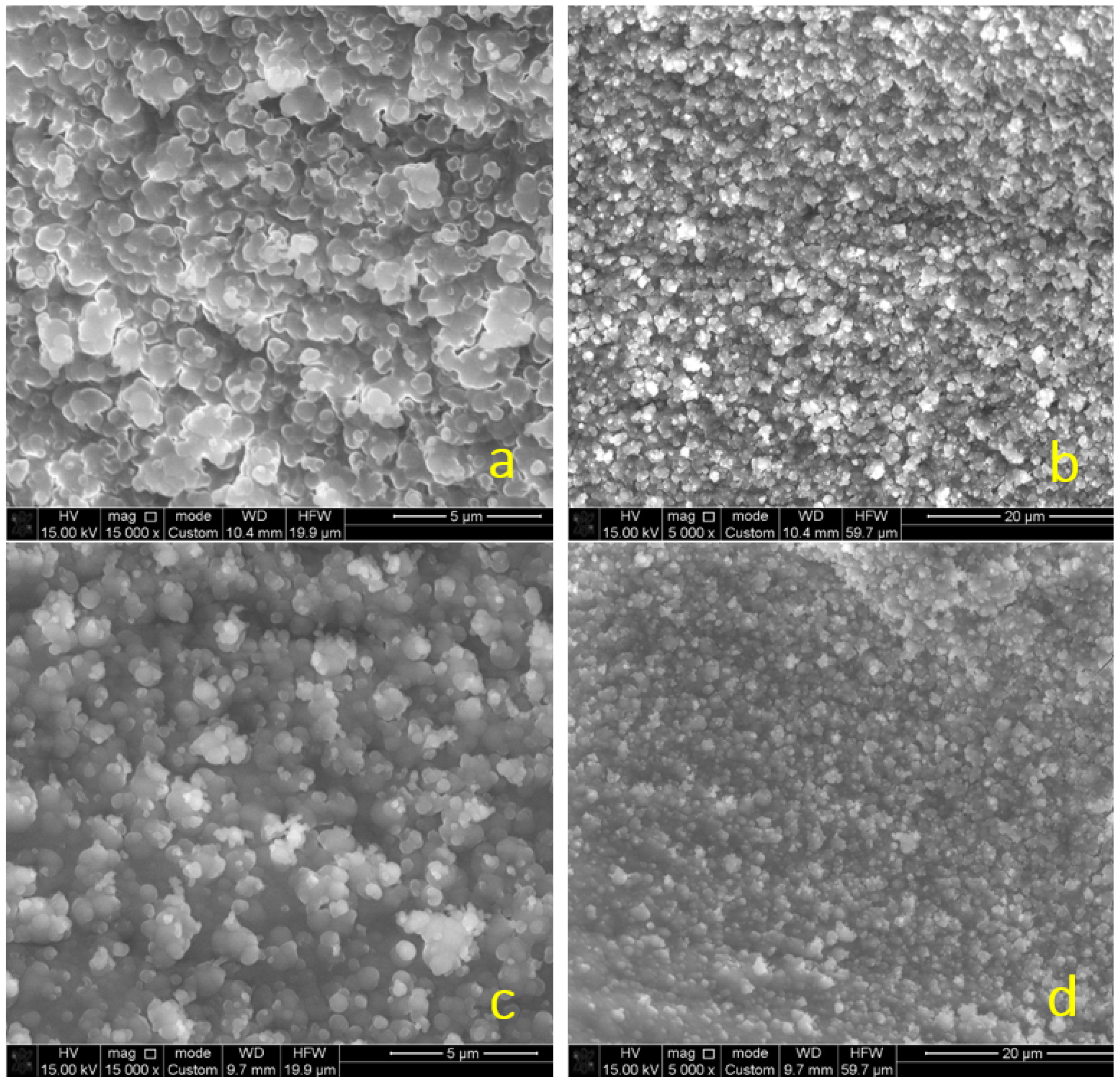
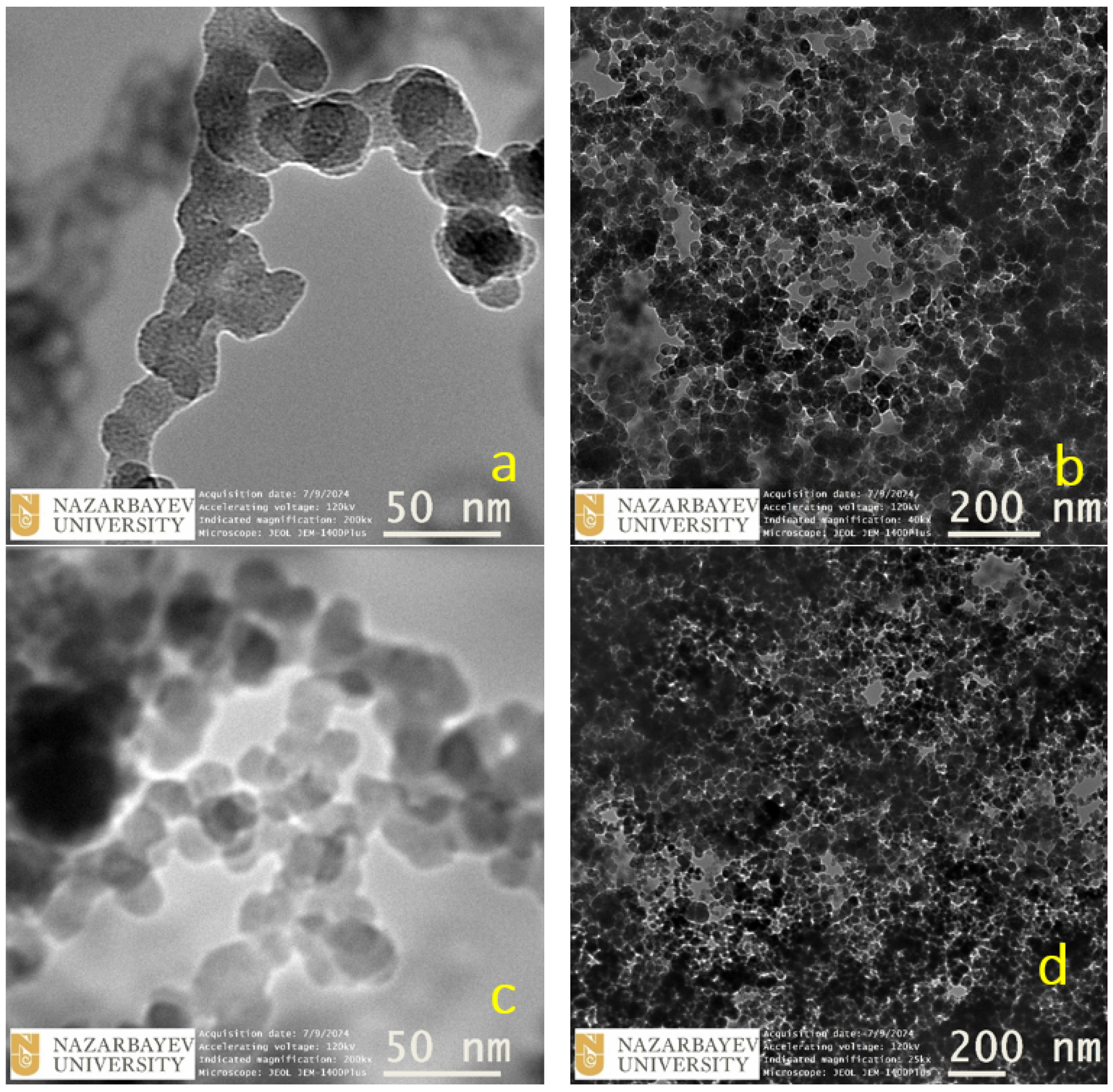
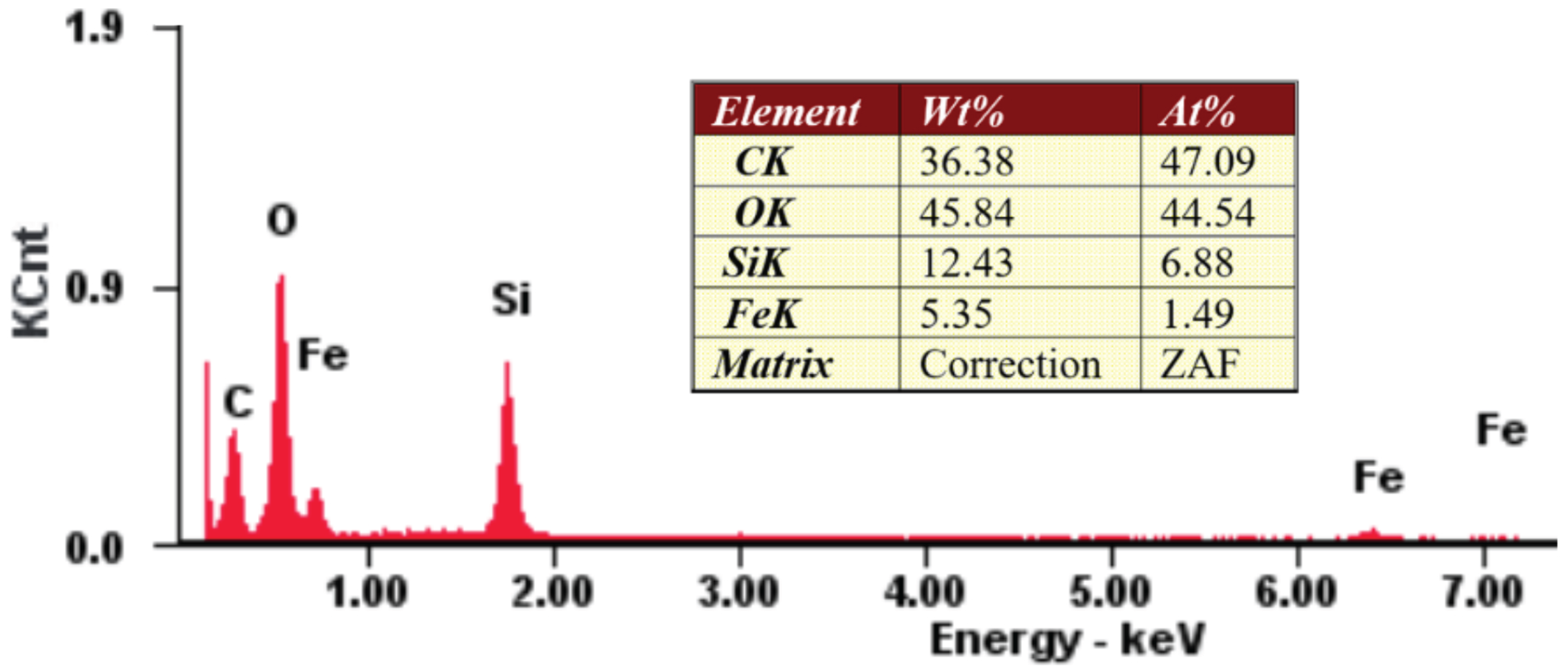
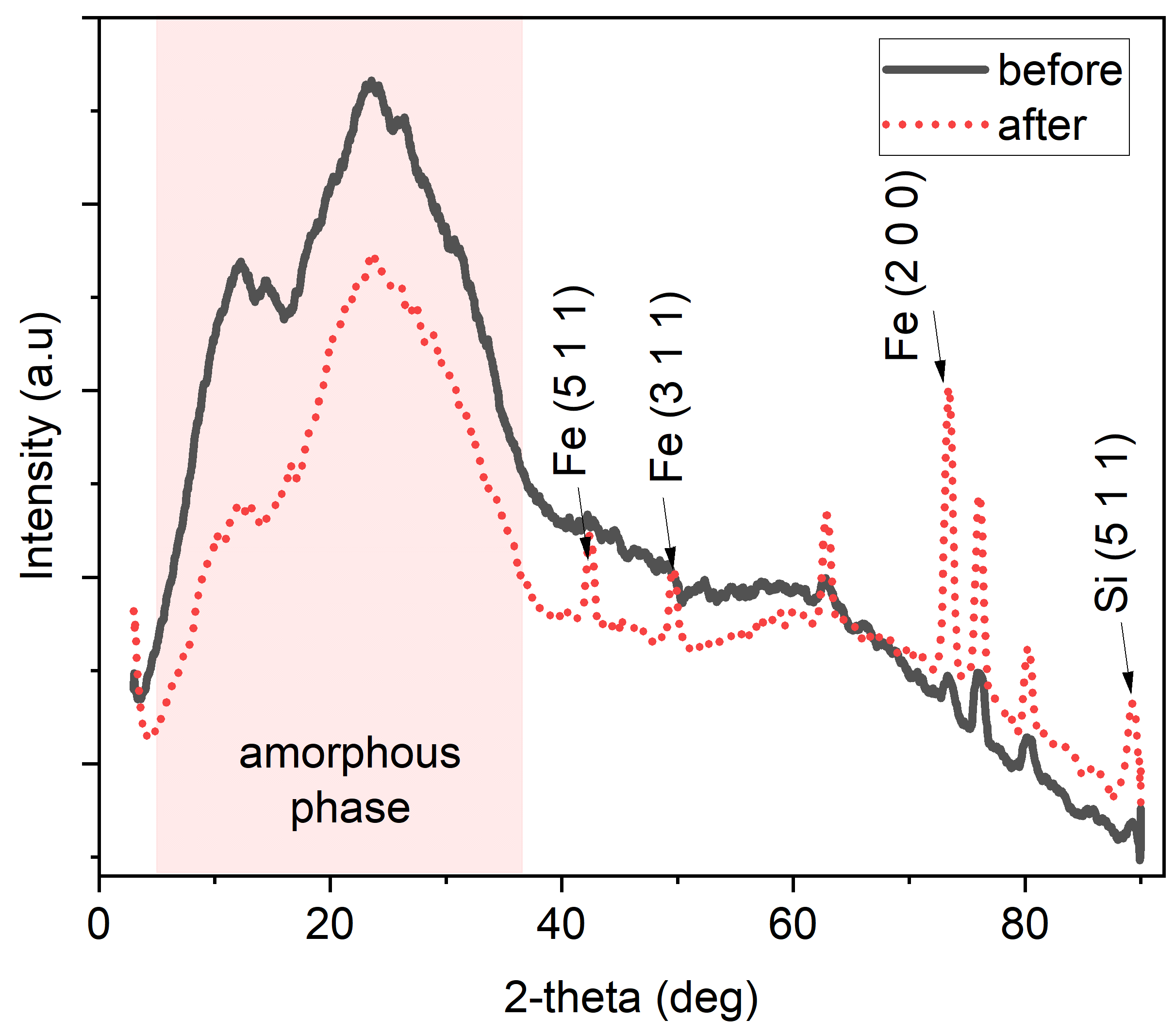
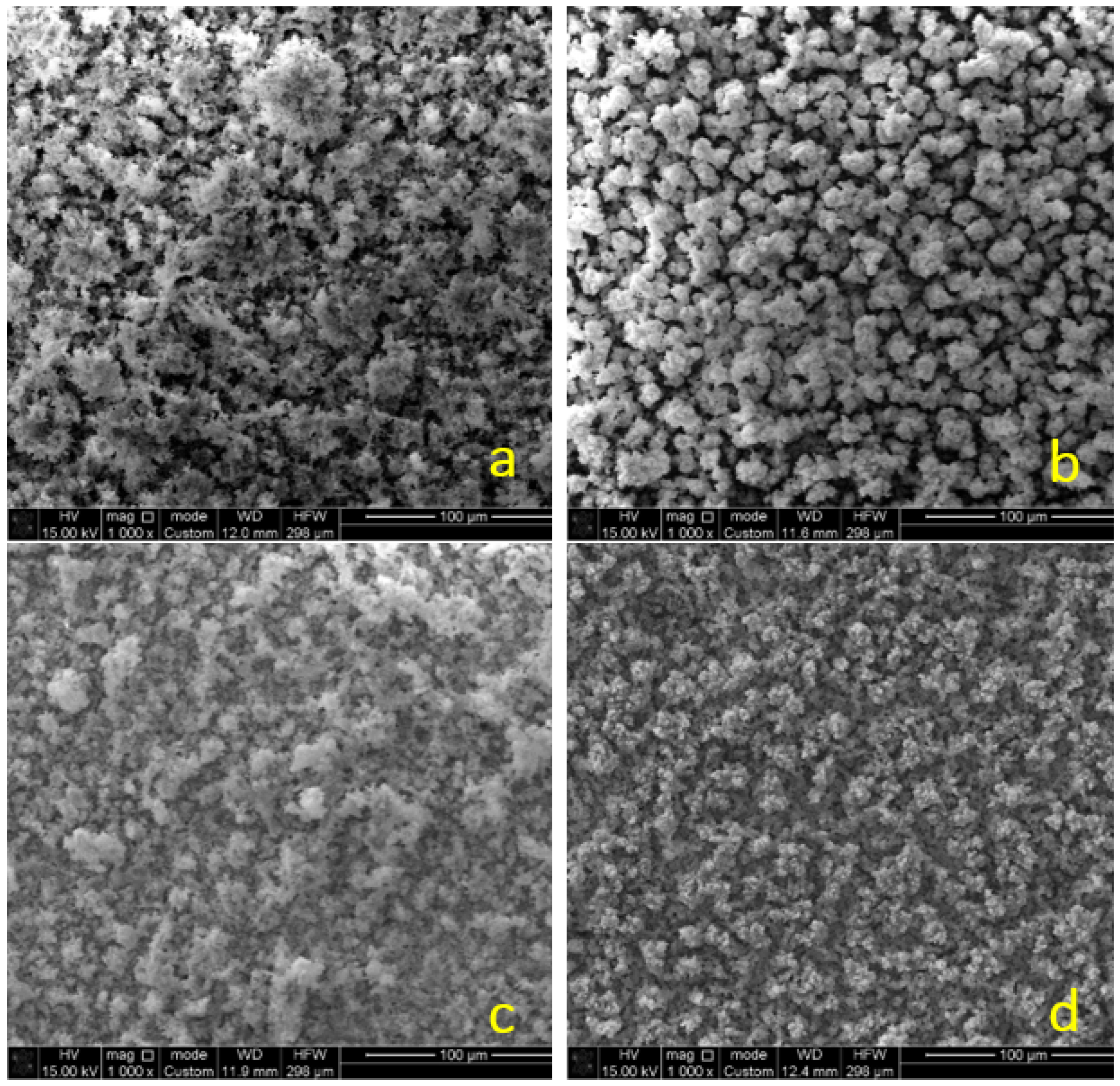
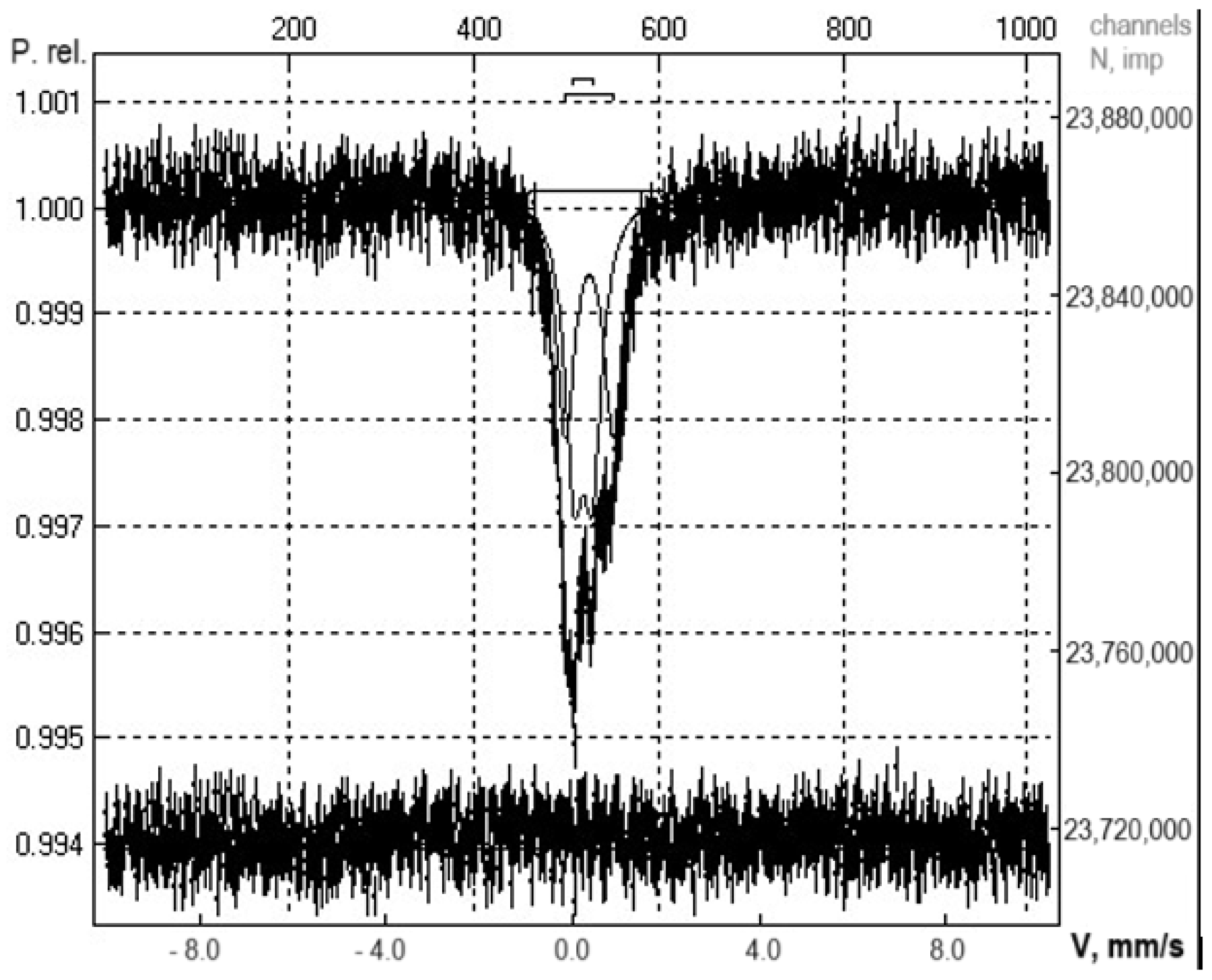
| Operating Parameters | Values |
|---|---|
| Accelerator voltage, U | 4 kV |
| Discharge current, | 0.1 MA |
| Pulse duration, | 150 μs |
| Pressure, p | 0.06 torr |
Disclaimer/Publisher’s Note: The statements, opinions and data contained in all publications are solely those of the individual author(s) and contributor(s) and not of MDPI and/or the editor(s). MDPI and/or the editor(s) disclaim responsibility for any injury to people or property resulting from any ideas, methods, instructions or products referred to in the content. |
© 2024 by the authors. Licensee MDPI, Basel, Switzerland. This article is an open access article distributed under the terms and conditions of the Creative Commons Attribution (CC BY) license (https://creativecommons.org/licenses/by/4.0/).
Share and Cite
Baikaliyev, A.; Abdirakhmanov, A.; Orazbayev, S.; Ussenov, Y.; Brodsky, A.; Aitzhanov, M.; Akhanova, N.; Dosbolayev, M.; Gabdullin, M.; Ramazanov, T.; et al. Synthesis of Si-Fe Chondrule-like Dust Analogues in RF Discharge Plasmas. Appl. Sci. 2024, 14, 8714. https://doi.org/10.3390/app14198714
Baikaliyev A, Abdirakhmanov A, Orazbayev S, Ussenov Y, Brodsky A, Aitzhanov M, Akhanova N, Dosbolayev M, Gabdullin M, Ramazanov T, et al. Synthesis of Si-Fe Chondrule-like Dust Analogues in RF Discharge Plasmas. Applied Sciences. 2024; 14(19):8714. https://doi.org/10.3390/app14198714
Chicago/Turabian StyleBaikaliyev, Akdaulet, Assan Abdirakhmanov, Sagi Orazbayev, Yerbolat Ussenov, Alexander Brodsky, Madi Aitzhanov, Nazym Akhanova, Merlan Dosbolayev, Maratbek Gabdullin, Tlekkabul Ramazanov, and et al. 2024. "Synthesis of Si-Fe Chondrule-like Dust Analogues in RF Discharge Plasmas" Applied Sciences 14, no. 19: 8714. https://doi.org/10.3390/app14198714
APA StyleBaikaliyev, A., Abdirakhmanov, A., Orazbayev, S., Ussenov, Y., Brodsky, A., Aitzhanov, M., Akhanova, N., Dosbolayev, M., Gabdullin, M., Ramazanov, T., & Batryshev, D. (2024). Synthesis of Si-Fe Chondrule-like Dust Analogues in RF Discharge Plasmas. Applied Sciences, 14(19), 8714. https://doi.org/10.3390/app14198714






